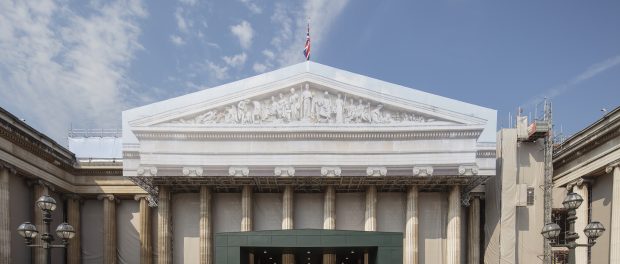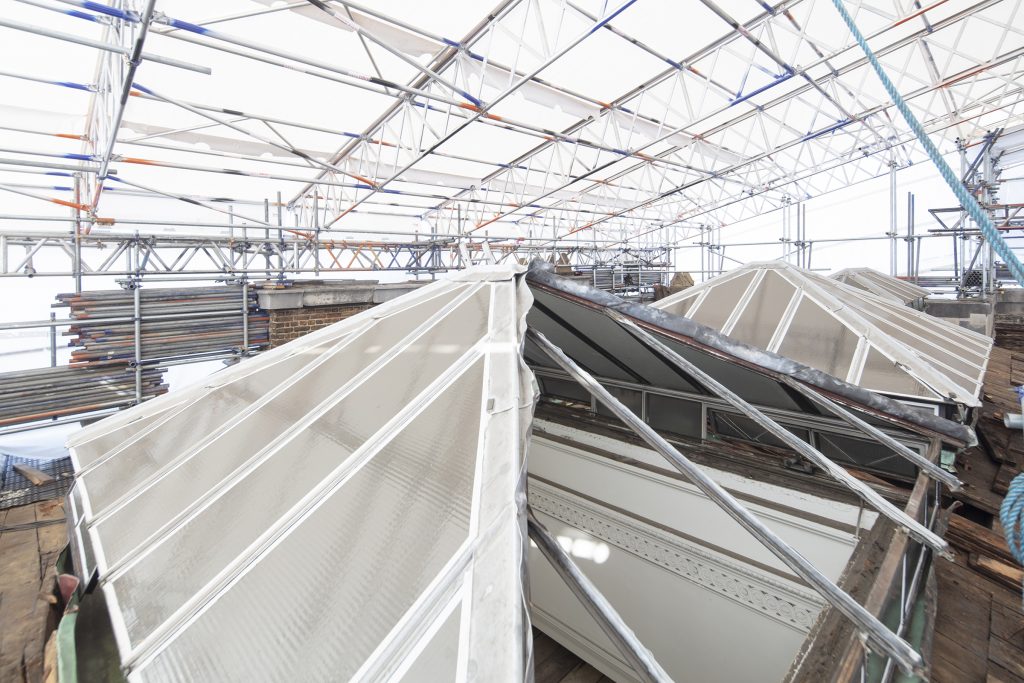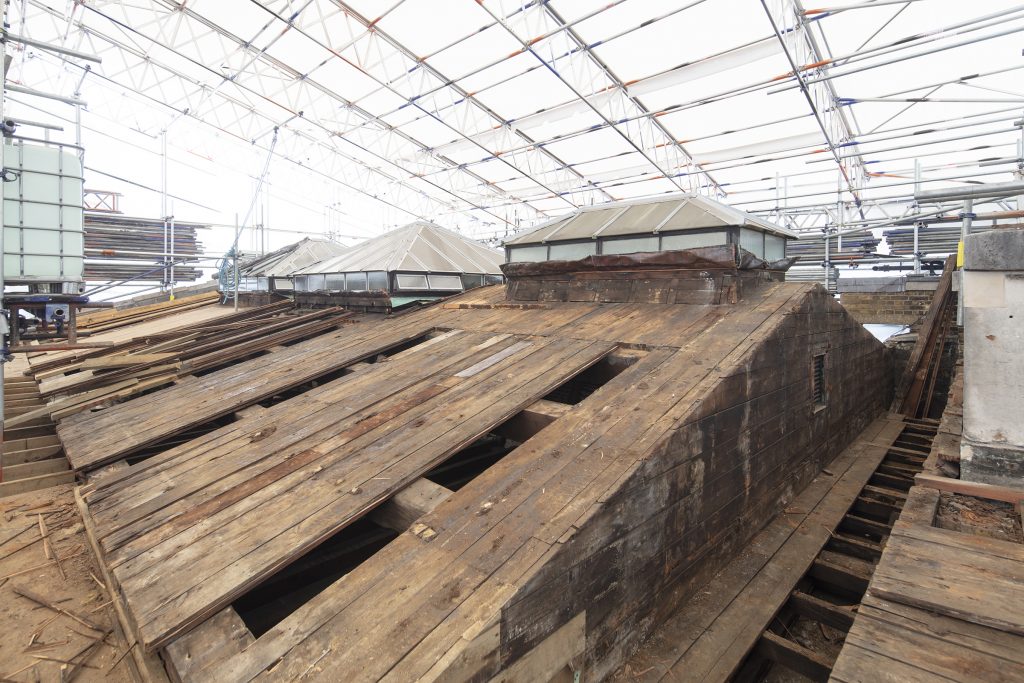Curo Construction enters final phase of refurbishment work at The British Museum

Curo Construction, a privately-owned construction company predominately operating in Central London, has been selected as Principal Contractor to embark on essential refurbishments of the South Colonnade at the British Museum, a Grade I Listed estate. Essential refurbishment and building conservation works are being undertaken, which include the replacement of the copper roof finish to the South Colonnade.
The British Museum is a monumental Greek Revival style building completed in the mid-19th century. It has four vast wings, and a triangular pediment, or tympanum, featuring stone sculptures called ‘The Progress of Civilisation’ designed by Sir Richard Westmacott. The site also houses an unparalleled collection of objects that date back 2million years, including famous objects such as the Rosetta Stone and the Sutton Hoo helmet.
Underneath the vast sections of roof, behind the colonnade, structural reinforcement work is also underway within the voids below. Stabilising structural elements and preventing any future water ingress will then facilitate work to the ornate soffit which has undergone various repairs over the years. The project has allowed for a holistic approach in carrying out carefully executed building conservation techniques. The works are expected to finish by Spring 2021.
Extensive planning and liaison with the Museum’s stakeholders were carried out in advance of the works to ensure that visitor experience was maintained and that the building was fully protected in its temporary state. COVID-19 interrupted the progress of the work for a period of time, but the project is now operating in COVID-secure conditions. The scaffolding, temporary roofs and temporary works have been meticulously evaluated to ensure that the Museum was able to open when government restrictions permitted. The key aesthetic element of the project is restoring the soffit bringing it back to the correct historical context with the use of traditional plastering techniques and materials and will be finished to blend seamlessly with the surrounding Portland stone.
Russell Torrance, Head of Capital Planning and Programme Management, British Museum said:
“This project will allow sensitive and essential works to be undertaken to the historic fabric of the museum allowing us to carry out building conservation techniques to the South Colonnade. Forward planning allowed us to reduce the visual impact of the project during the period on site with the design and erection of subtle scaffold netting, a digital representation of the pediment and graphics to the temporary hoarding. Curo Construction have responded well at rising to the challenge of deploying a project specific safe system of works within a live operational environment and at the same time worked collaboratively with our team to implement an enhanced level of control measures in response to COVID-19.”
Rob Gordon, Curo Constructions Operations Director says: “Our relationship with the British Museum goes back a number of years. Being entrusted with restoring a part of history is a privilege and one of the most important projects the company has undertaken to date. It is with an immense sense of pride we play a small role in restoring this part of the Grade I listed building with the leadership of the Museum’s Capital Planning and Programme Management department.”
Simon Douch, Principal for Heritage Conservation at HOK, a global design, architecture, engineering and planning firm, said: “The British Museum is widely regarded as architect Sir Robert Smirke’s best known building. The works to the soffit required extensive surveying to gain a full understanding of the existing construction and their conditions. Additionally, the team have looked at how repairs have been carried out to date and scope of works items that will address past issues that have been caused by indirect WW2 damage and post 1950’s maintenance work. An ambitious scaffolding has been constructed to allow for the survey inspections and this has also allowed for conservators to carry out a detailed inspection of Westmacott’s statues.”



